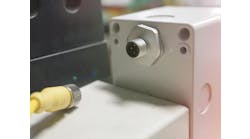Is big data more dangerous than it’s worth?
How does machine design affect data security on a network?
What’s the difference between machine-to-machine communications and the Internet of Things?
What is the danger of taking M2M communications to the Internet of Things?
The Internet of Things (IoT) and machine-to-machine (M2M) communications are the same, and yet different, because IoT takes M2M on the Internet. One thing is for sure: It transcends governmental boundaries. Equipment can be anywhere in the world and still be part of the conversation.
This group of heavy hitters in the IoT domain offer an international take on M2M communications and what the future holds. Learn more about IoT and what it means to manufacturing at Smart Industry.
Meet the Panel
Click the links below to see what the panel had to say
Is big data more dangerous than it’s worth?
How does machine design affect data security on a network?
What’s the difference between machine-to-machine communications and the Internet of Things?
What is the danger of taking M2M communications to the Internet of Things?
















